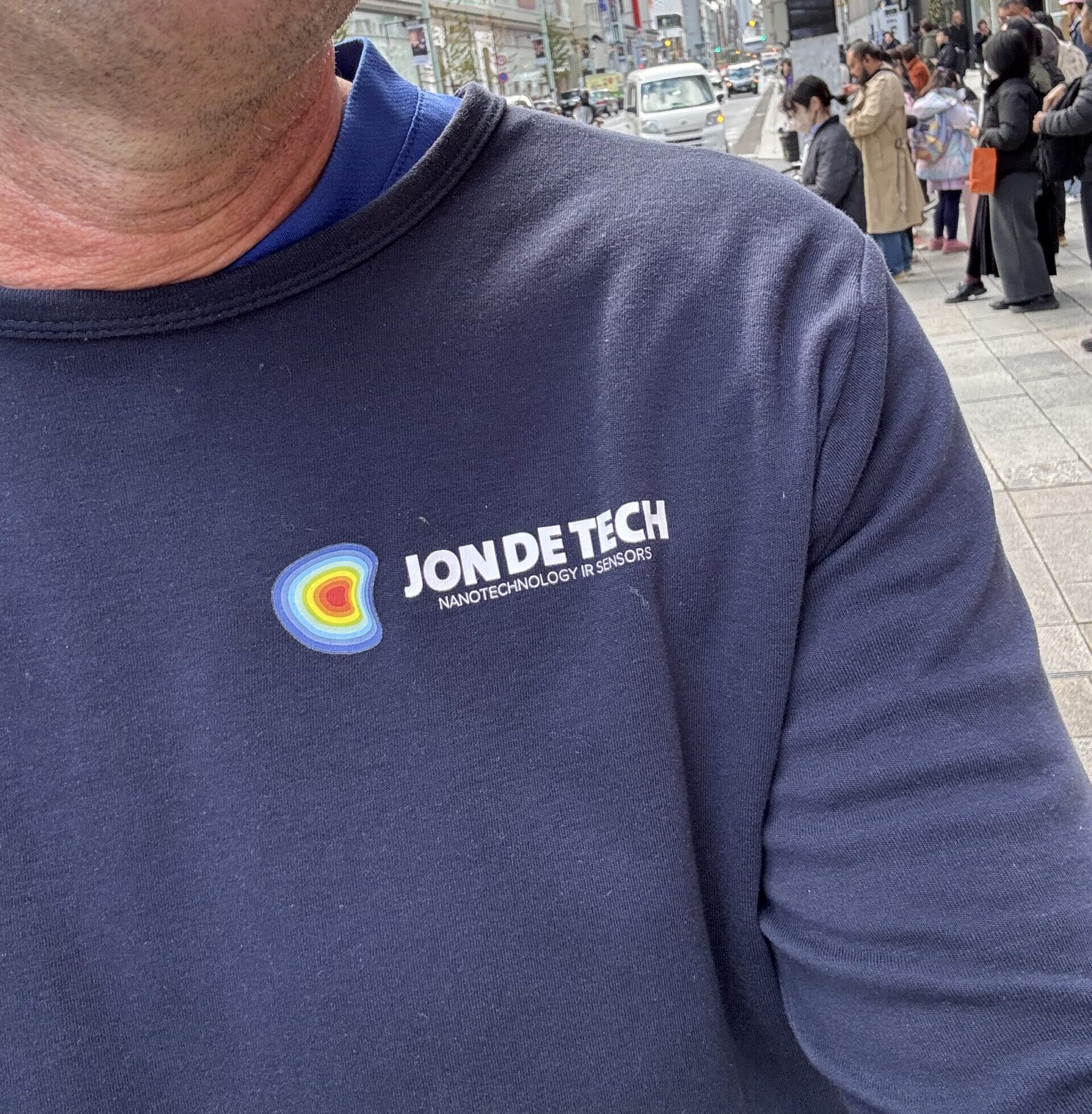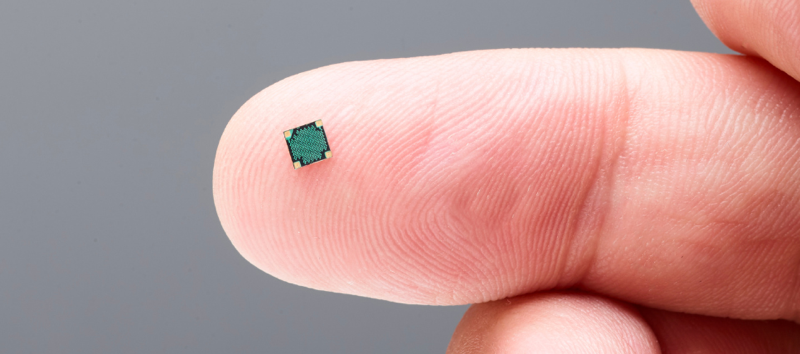A JonDeTech white paper (light edition)
Introduction
Core Body Temperature (CBT) is one of the most fundamental indicators of human health¹. It reflects what is happening inside the body — metabolism, hormonal changes, immune response, stress and recovery². Unlike skin temperature, which depends on and varies with the environment, CBT stays stable and captures the body’s internal condition³.
However, measuring CBT continuously and accurately has always been a challenge⁴. Most existing solutions are invasive, uncomfortable, or too large and power-hungry for everyday use⁵. Mouth and ear thermometers are impractical for long-term monitoring. For measurements on skin (e.g. wrists, forehead, torso), contact thermometers and today’s common consumer devices using infrared sensors, fail to accurately measure CBT, since skin temperature alone cannot capture the thermal conditions inside the body⁶.
JonDeTech is changing this. With our sensor lineup, having both analog as well as our new digital products, CBT can now be measured non-invasively, continuously and in real time — opening new possibilities in healthcare, sports, safety and wellness.
Why Core Body Temperature matters
Body temperature is tightly controlled by the brain’s thermoregulation system⁷. Even a small shift of 0.2–0.3 °C can reveal important physiological changes⁸:
- Fever detection: Early signs of infection or inflammation, even before symptoms appear⁹
- Hormonal balance: Ovulation, fertility cycles and menopause tracking¹⁰
- Heat stress: Identifying dangerous temperature build-up in industrial workers or athletes¹¹
- Sleep and recovery: Understanding circadian rhythm, fatigue and stress¹²
- Energy balance: Insights into metabolism and calorie burn¹³
As digital health becomes part of daily life, CBT is increasingly viewed as a “next generation vital sign” – complementing heart rate, oxygen saturation, and skin temperature¹⁴⁻¹⁷.
The technical challenge
To measure CBT on the surface of a body, a sensor duo consisting of a thermometer and a heat-flux sensor is needed¹⁸. The thermometer measures conditions on the skin, but as humans are colder on the surface than inside, a temperature difference is present between the skin and the internals of the body. This difference is handled by the heat-flux sensor, which measures the heat emitted by our bodies¹⁹. To effectively translate measurements of skin temperature and heat flux into CBT, the heat-flux sensor must have high sensitivity, low noise, and minimal thermal drift²⁰.
Traditionally, infrared sensors are used in wearables to measure human temperature²¹. Such techniques have several limitations:
- Only skin temperature is measured — not CBT²².
- Too thick and limiting for integration in small form-factor wearables such as bracelets, rings, earbuds, or watches.
- Sensitive to the surrounding environment (e.g. air temperature, wind) as readings only depend on surface conditions.
- Difficult to calibrate in mass production²³.
As a result, CBT measurement has until now been limited to research or specialized medical equipment — not consumer or portable devices²⁴.
JonDeTech’s solution
JonDeTech’s patented heat-flux sensor technology solves these challenges. The sensors are based on a thermopile made from thermoelectric materials deposited into a flexible polymer substrate²⁵.
Key advantages include:
- Measure CBT – not just skin temperature
- Low power consumption: Suitable for continuous monitoring in battery-powered systems, without power-hungry heating circuitry typical of zero-heat-flux systems²⁶
- High integration freedom: Easily embedded in wearables, smart patches or compact medical devices
- JIRS30 – thin (0.17 mm) and flexible analog heat flux sensor, offering full design freedom and allows for CBT measurements when coupled to skin temperature measurements.
- JIRS30D – digital output version delivering stable heat-flux and skin-temperature data directly to microcontrollers, simplifying integration.
Applications and market potential
JonDeTech’s sensor platform supports a wide range of applications across industries:
- Healthcare & Wellness: Smart thermometers, digital patches, remote patient monitoring, fever and infection detection, fertility and menopause tracking²⁷⁻²⁹
- Sports & Fitness: Core temperature tracking during endurance training, heat stress management, recovery optimization³⁰
- Safety & Industry: Monitoring workers in high-temperature environments (construction, mining, firefighting) for early warning of heat-related illness³¹
- Consumer Electronics: Integration into smartphones, AR/VR headsets, and earbuds for personalized health insights³²
In all these areas, CBT provides a new dimension of real-time physiological feedback — moving from reactive healthcare to preventive and personalized wellbeing³³.
Why JonDeTech is uniquely positioned
JonDeTech is one of the very few companies worldwide with a fully digital, ultra-thin infrared sensor platform ready for high-volume production.
Our competitive edge comes from:
- Proprietary Swedish technology – Developed and patented by JonDeTech, optimized for low-cost, scalable production³⁴
- Industrial readiness – Dual manufacturing setup in Europe (Varioprint AG and Dyconex AG) ensuring quality and delivery security
- Integration-friendly design – Thin, flexible, digital sensors suited for modern IoT and wearable architectures³⁵
- Proven ecosystem – Collaborations with design houses, OEMs and module makers in health, safety and consumer markets
- Sustainability and compliance – Operating under ISO 9001/14001 and the Responsible Business Alliance (RBA) Code of Conduct³⁶
Conclusion
Core Body Temperature is quickly becoming one of the most important health parameters of our time — a vital sign that combines physiological depth with everyday usability³⁷.
JonDeTech’s innovative digital sensors make accurate CBT measurement possible in ways never before achieved: thin, reliable, scalable, and ready for integration. By enabling a deeper understanding of the human body through technology, we at JonDeTech want to help our partners create smarter, safer, and healthier products — for a world where temperature truly matters.
References
- Ducharme, M.B. & Jay, O. Should Core Temperature Be Considered a Vital Sign? Critical Care, 2016.
- Guyton, A.C. & Hall, J.E. Textbook of Medical Physiology, 14th ed., Elsevier, 2021.
- Romanovsky, A.A. Skin Temperature: Its Role in Thermoregulation and Measuring Methods, Acta Physiologica, 2014.
- Lim, C.L. Advances in Non-Invasive Core Body Temperature Measurement, Annals of Biomedical Engineering, 2020.
- Baker, F.C. et al. Wearable Sensors for Continuous Core Temperature Monitoring, Sensors, 2021.
- Choi, J. et al. Infrared Thermometry and Its Limitations in Wearable Applications, IEEE Sensors Journal, 2022.
- Morrison, S.F. Central Control of Body Temperature, F1000Research, 2016.
- Sund-Levander, M. Normal Body Temperature Revisited, Journal of Advanced Nursing, 2002.
- World Health Organization. Digital Health Guidelines, 2022.
- McNeilly, A.S. Hormonal Regulation of Reproductive Cycles, Human Reproduction Update, 2020.
- Nybo, L. et al. Heat Stress and Performance: Physiological Impact of Core Temperature Rise, Journal of Applied Physiology, 2019.
- Kräuchi, K. The Human Sleep–Wake Cycle and Body Temperature, Chronobiology International, 2007.
- Blondin, D.P. Thermogenesis and Metabolic Regulation in Humans, Nature Reviews Endocrinology, 2015.
- Gao, W. et al. Next-Generation Wearable Biosensors for Real-Time Health Monitoring, Nature Biomedical Engineering, 2021.
- Ducharme, M.B. & Jay, O. (as above).
- Clemente, F.M. et al. Core Body Temperature in Sports and Exercise: Methods and Relevance, Frontiers in Physiology, 2023.
- Digital Medicine Society. Defining Digital Biomarkers, 2023.
- Niedermann, R. et al. Estimation of Core Body Temperature from Skin Temperature and Heat Flux, Physiological Measurement, 2014.
- Kim, J. et al. Flexible Heat-Flux Sensors for Wearable Applications, Advanced Healthcare Materials, 2019.
- JonDeTech internal technical documentation, 2025.
- Choi, J. et al. (as above).
- Lim, C.L. (as above).
- Wang, Y. et al. Calibration Challenges in Infrared Wearables, IEEE Transactions on Instrumentation and Measurement, 2020.
- Baker, F.C. et al. (as above).
- JonDeTech Patent Portfolio, 2019–2024.
- Niedermann, R. et al. Zero-Heat-Flux Thermometry and Power Consumption Trade-Offs, Medical Engineering & Physics, 2016.
- WHO (as above).
- McNeilly, A.S. (as above).
- Baker, F.C. Menopausal Thermoregulation and Digital Monitoring, Nature Digital Medicine, 2022.
- Clemente, F.M. et al. (as above).
- Nybo, L. et al. (as above).
- Gao, W. et al. (as above).
- Digital Medicine Society (as above).
- JonDeTech Patent Portfolio, 2019–2024.
- JonDeTech Company Presentation, 2025.
- JonDeTech Code of Conduct, 2025.
- Ducharme, M.B. & Jay, O. (as above).


